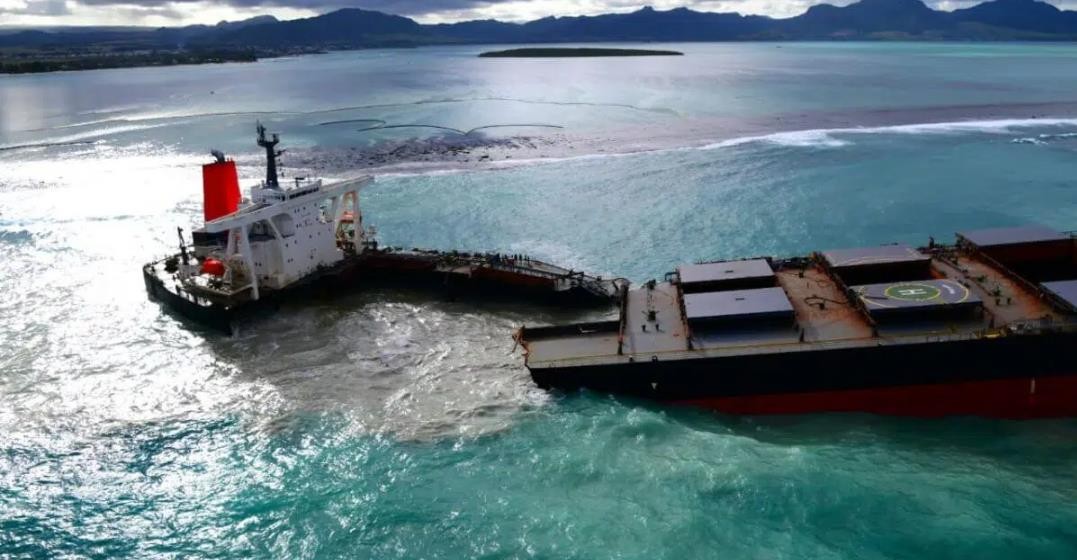三年前,日本散货船“Wakashio”号在毛里求斯海岸搁浅,1000吨极低硫燃料油(VLSFO)泄漏入海。
科廷大学领导的一项新研究证实,石油仍在污染该地区靠近重要保护区的红树林。
科廷大学西澳有机和同位素地球化学中心的首席研究员艾伦·斯卡利特(Alan Scarlett)博士表示,研究小组发现,红树林沉积物中的石油与2020年“Wakashio”号泄漏的VLSFO非常吻合。
Scarlett表示,自漏油事件发生以来,毛里求斯当地社区已经在红树林中发现了石油,但该大学最近的研究将漏油事件与MV Wakashio联系起来。
研究小组分析了红树林的样本,包括一个没有受到泄漏影响的参考地点。他们发现,参考地点是无油的,但另一个地点含有来自船燃料的石油。
尽管随着时间的推移,石油已经分解和风化,但它仍然存在,并可能继续损害敏感的红树林生态系统。
Scarlett博士说,了解这种污染不仅对毛里求斯人民很重要,对世界其他地方也很重要,因为人们对这种新型燃料在泄漏后在海洋中的表现知之甚少。
研究小组与伍兹霍尔海洋研究所合作,开发了一种特殊的溢油指纹,这有助于他们确认它在红树林土壤中的存在。
他们还比较了“Wakashio”的VLSFO与传统重型船用燃料在环境中的表现。
他们使用先进的模型发现,与传统的燃料油相比,“Wakashio”的油有更多的分散、蒸发或下沉。然而,了解对海洋生物的全面影响仍然很困难。
这项研究发表在《海洋污染公报》(Marine Pollution Bulletin)上,重点关注“Wakashio”漏油事件的长期影响。
虽然大部分有毒物质已经分解,但石油仍留在环境中的事实表明,泄漏会对红树林等脆弱的生态系统产生持久的影响。
红树林生长在岛屿海岸的陆地和海洋之间。毛里求斯有两种红树林。
红树林遍布全岛,但为了建设酒店而砍伐森林,使北部和西部的树木带变得狭窄,东部海岸的树木带变得茂密。据估计,2003年毛里求斯的红树林面积约为2000公顷。
▲Image Credits: Wikipedia
▲Image Credits: Wikipedia
英文原文
It’s been three years since the Japanese bulk carrier MV Wakashio ran aground off the coast of Mauritius, spilling 1,000 tonnes of Very Low Sulphur Fuel Oil (VLSFO) into the water.
A new study led by Curtin University has confirmed that the oil is still contaminating the mangrove forests in the area, which are close to important conservation sites.
The lead researcher from Curtin’s WA Organic and Isotope Geochemistry Centre, Dr Alan Scarlett, said the team found that the oil in the Mangrove sediments closely matches the VLSFO spilt by the Wakashio in 2020.
Scarlett says that the local communities in Mauritius have spotted oil in the mangroves since the spill, but the recent study done by the university officially links the spill to the MV Wakashio.
The research team analysed samples from the mangroves, including a reference site that wasn’t affected by the spill. They found that the reference site was oil-free, but the other site contained oil from the ship’s fuel.
Although the oil had broken down and weathered over time, it was still present and could continue to harm the sensitive mangrove ecosystem.
Dr Scarlett says that understanding the contamination is important not only for the people of Mauritius but also for the rest of the world, as only little is known about how this new type of fuel behaves in the ocean after a spill.
The research team collaborated with the Woods Hole Oceanographic Institution and developed a special fingerprint of the spilt oil, which helped them confirm its presence in the mangrove soil.
They also compared how Wakashio’s VLSFO behaved in the environment as compared to conventional heavy marine fuels.
They found that more of the Wakashio oil had dispersed, evaporated or sunk than traditional fuel oils would, using advanced models. However, understanding the full impact on marine life is still difficult.
This study, published in the Marine Pollution Bulletin, focuses on the long-lasting effects of the Wakashio oil spill.
While much of the toxic material has broken down, the fact that oil remains in the environment shows how spills can have enduring impacts on delicate ecosystems like mangroves.
Mangroves grow between the land and the sea on the coast of an island. There are two types of mangroves in Mauritius.
Mangroves were spread all over the island, but deforestation for the construction of hotels has left narrow belts in the North and the West and thicker zones of trees on the Eastern coast. Mangroves were estimated to be around 2000 hectares in Mauritius in 2003.
免责申明:本文根据Curtin University等内容整理,如有误差,以英文为准;仅代表作者观点,不代表中国海员之家立场。其真实性及原创性未能得到中国海员之家证实,在此感谢原作者的辛苦创作,如转载涉及版权等问题,请作者与我们联系,我们将在第一时间处理,谢谢!联系邮箱:cnisu@54seaman.com



 联系我们人工客服
联系我们人工客服



















 :1391995811
:1391995811


评论 (0人参与)